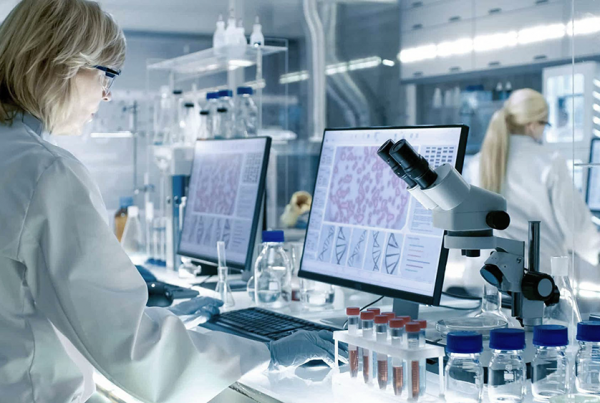Despite the fact that the molecular PCR technique is the gold standard for the diagnosis of Covid -19, the detection of IgG / IgM SARS-CoV-2 antibodies has proved useful during the pandemic for the new Coronavirus. Serological tests are simpler, cheaper and faster than molecular tests, so their use is in high demand, especially in the following circumstances.:
- Seroprevalence studies at the local, regional or national level
- Identification of those who have had contact with the virus
- Confirmation of negative PCR when symptoms persist
- Retrospective studies in deceased patients
- Joint use with PCR for monitoring and control of diagnosed patients
- Immunization research studies
- Tracking of contacts when there is Impossibility to perform PCR test
Among the various immunoassay methods that perform serological tests, the most widely used techniques are lateral flow immunochromatography and chemiluminescence (abbreviated CLIA for ChemioLuminiscence ImmunoAssay). The rapid tests belong to the first category and can be used anywhere since they do not require an analyzer, while the other techniques require laboratory instrumentation.
In clinical analysis laboratories the CLIA technique is the most used since it is the one that offers the most versatility, the fastest and also the one with the best detection limits. In other words, CLIA enables the detection of antibodies at lower levels of concentration and much faster than any other immunoassay method.
High-sensitivity CLIA methods :
- Electrochemiluminescence or eCLIA. It is based on both the technology developed in sophisticated equipment such as Roche’s Elecsys or Lifotronic’s eCLIA 8000, which together with highly specific and sensitive reagents offer high performance.
- Magnetochemiluminescence or mCLIA. This Watmind proprietary technique is even faster and more responsive than eCLIA but is not as well known.
Covid-19 antibody detection techniques, ideal for all kinds of needs.
| LFIA | MagnetoCLIA | ElectroCLIA |
| It is the cheapest technique, does not require equipment and can be performed outside the laboratory. It allows the simultaneous qualitative measurement of IgM and IgG in 10 minutes in a drop of capillary blood, which is very useful outside the healthcare environment such as: airports, prisons, religious communities, sports associations, nursing homes, immigrant centers, forces security, homeless care centers. As it is a visual test, the reading is subjective and, therefore, its use is recommended only for healthcare professionals. |
This technique allows to obtain quantitative values of total or specific antibodies measured with the highest sensitivity. It requires a small, portable, maintenance-free analyzer and microfluidic disposable cards that are analyzed one by one or 4 in four. With a minimal amount of sample and a fast response time, this technique is indicated for use in Care Intensive, Laboratory, Emergency Laboratory, Ambulances, ICUs, CCUs, Chest Pain Centers, Cardiology and Pediatrics. |
Conventional laboratory method with liquid reagents to analyze serum or plasma samples in series fully automatically from the primary tube. Sophisticated equipment with robotic arms for the reagent and sample dispensing but which are especially useful when there are a large number of samples to be analyzed by chemiluminescence. The current problem with these tests is the difficulty in finding controls and the appropriate cut-off to determine positivity. or negativity. |






